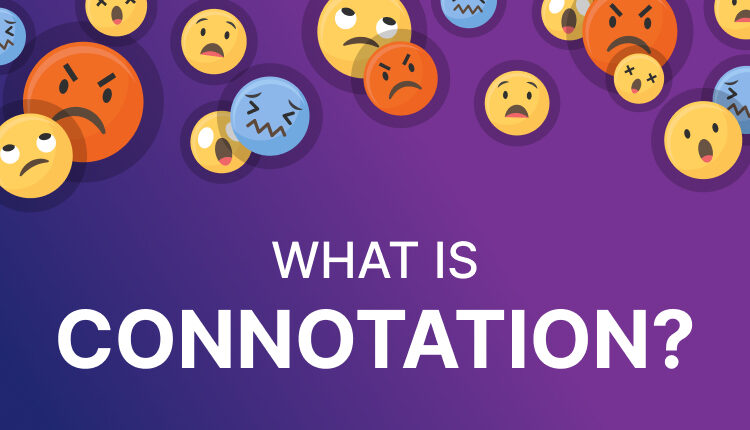Words are not merely a series of letter strings; they have weight and can shift in meaning. Among these many interesting features of language, one term leaps out: “connotation.” Perhaps you’ve come across the term in school or when discussing literature, but what does it really mean?
Understanding connotation unlocks the door to a much better appreciation for how language informs our perceptions. Whether you are a writer looking to improve your diction or just an individual looking to expand your vocabulary, this is one word that you should master.
With this knowledge, you will have improved verbal output. Let’s probe the subtlety of connotation and know why this is so important in everyday speech!
What is Connotation?
Connotation is the emotional or cultural implications that a term suggests beyond its actual meaning. The meaning could be extremely varied based on context and individual experiences. For instance, “home” would evoke feelings of warmth, safety, and love in many, while it would create conflict or discomfort among others.
Connotation is certainly one of those things that have to be understood because it affects how a message will be received. Words have the ability to evoke positive, negative, or neutral connotations in both communication and writing. To be able to understand this is a characteristic that even one word can cause one to feel certain sensations or paint vivid images within a reader’s mind.
Such use of connotation is that the writers use it deliberately to convey something in a subtle way or to add more and more to their storyline. They pick up some words that evoke specific thoughts and impart those thoughts to readers, rather than saying everything in plain words. Such layers complete comprehension along with expression in words.
Examples of Connotation
Connotations can have the biggest impact on how we feel about words. The word “home” is warm and tender; it says something not only about safety but about belonging. In contrast, the word “house” merely refers to a physical structure, with no emotional connotations.
For instance, while the word “slim” has a considerably positive connotation, meaning attractive or even healthy-looking, “skinny” carries a negative connotation, hinting at frailty or serious underweight.
Even colors have connotations. The color red evokes passion or danger, while blue brings to mind calmness and trust. These shades of meaning creep into our reading and hearing of language in subtle ways every day.
Exploring Word History and Origins
The term connotation itself has very deep historical roots in language; it comes from the Latin connotare, or “to signify in addition.” This captures the idea that words can signify above and beyond their obvious literal meaning, so communication becomes both a question of conveying facts and bringing nuances and emotions into the mix.
The more developed the languages, the more developed is the understanding of connotation. English and the way the word felt became prominent during the 19th century when linguists not only questioned the meaning but also the feel of words. The emotional weight of a word will often define perception and influence an interaction.
Connotation examples have been present in everyday speech and literature alike throughout the years. The writers used these connotations in broadening the expression of complex ideas that are also worded succinctly; in the process, written and spoken dialogues are blessed with the depths that are echoed in other levels.
Use of Connotation in Writing
Word connotation can strongly influence your message when you’re writing. One word will cause an entire different view and imagination in the reader’s minds. You might say someone is “skinny,” or there is elegance toward slender or weakness through “scrawny” accompanying the person. In short, every one of these choices carries weight and emotions with them.
There should be consideration of the audience and the purpose behind using connotation in your written text. For instance, when using playful words, that would be apt enough for something as lighthearted as a blog post; however, there are some terms that could be used in academia as a more serious piece. Tailoring what one is saying means the right tone comes through and reaches the reader’s heart effectively.
Don’t be afraid to experiment with synonyms in revisions. Research how subtle differences in wording change the meaning and emotional impact of phrases. This close attention will make your writing much more vibrant for your readers and will even better evoke emotion.
Connotation vs. Denotation
Connotation and denotation represent two sides of the same linguistic coin. Denotation refers to the literal meaning of a word, its explicit meaning that you would find in a reference book. For example, “home” denotes a physical structure where people live.
That is connotation-the emotional or cultural association that accompanies the use of a word beyond its formal definition. To most people, the term “home” conjures up feelings of warmth, comfort, and security. These are but some nuances that vary greatly within cultures and personal experiences.
Knowing this contrast will assist you in honing your writing by helping you choose words that convey both literal and emotional meanings. Trinka’s grammar checker enhances your writing by providing suggestions that consider both denotation and connotation, ensuring clarity while adding depth and interest to your language.

